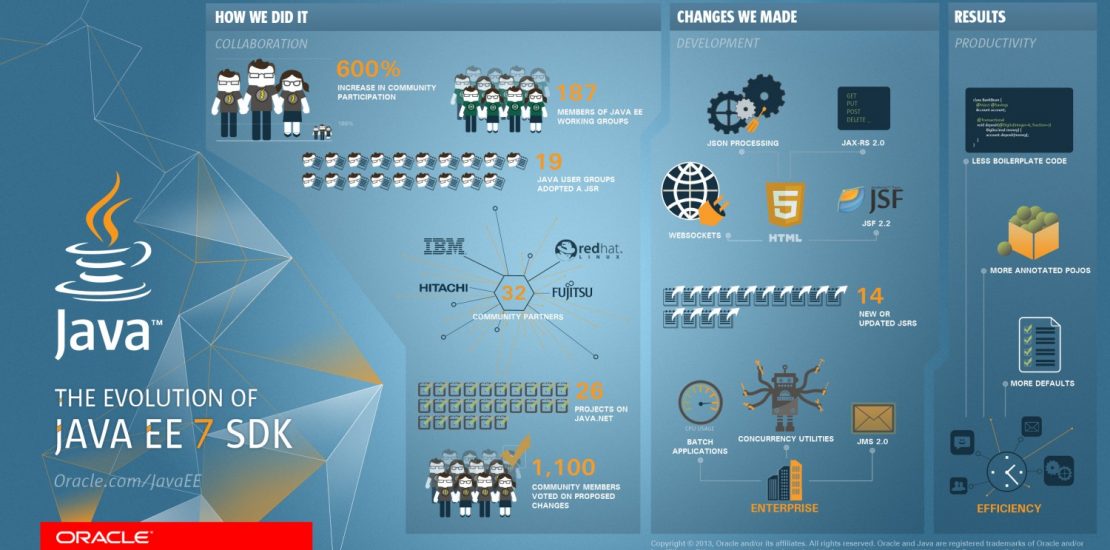Java EE 7 At A Glance
- February 2, 2017
- Posted by: admin
- Categories: Innovation, International, Java, Uncategorized
No Comments

The Java Enterprise Edition 7 offers new features for enhanced HTML5 support, helps developers being more productive and further helps meeting enterprise demands. As a developer you will write a lot less boilerplate code and have better support for the latest Web applications and frameworks. There are a couple of new features in Java EE 7 and Arun compiled a list of the top ten most prominent ones a while ago already and you can see the complete slide-deck as part of the Java EE 7 samples project on GitHub. This is a quick recap of them:
- Java API for WebSocket 1.0 (JSR 356):
There is first class support for creating and deploying WebSocket endpoints. There is a standard W3C JavaScript API that can be used from browsers but this API also introduces a client endpoint. The reference implementation is Tyrus - Batch Applications for the Java Platform (JSR 352):
In-built support for Batch applications allows to remove dependency on third-party frameworks. Also see the Batch Applications tutorial on WildFly for further information.
- JSON Processing (JSR 353):
Native support for JSON processing allows to make the application light-weight and getting rid of third party libraries. - Concurrency Utilities for Java EE (JSR 236):
Concurrency Utilities extends JSR standard Java SE Concurrency Utilities and add asynchronous capabilities to Java EE application components. - Simplified JMS API (JSR 368):
JMS API has been extremely simplified by leveraging CDI, Autocloseable, and other features of the language.

